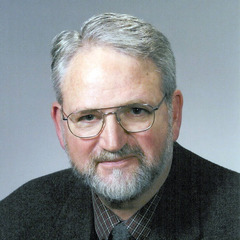You are not currently logged in. Please create an account or log in to view the full course.
Composition and Revision
- About
- Transcript
- Cite
Fitzgerald: The Great Gatsby
In this course, Professor James L. W. West III (Penn State) explores F. Scott Fitzgerald’s The Great Gatsby. In the first lecture, we think about the novel’s composition and revision, looking in particular at four versions of the novel – the Ur-Gatsby (two pages of notes written in 1923), the autograph manuscript, the galley proofs, and the first edition. In the second lecture we think about the name ‘Trimalchio’, one of the working titles for the novel, as well as Francis Cugat’s painting ‘Celestial Eyes’, which was featured on the dust jacket of the first edition of the novel. In the third lecture we think about the real-life figures who served as models for some of the characters in the novel – e.g. Ginevra King (1898-1980) for Daisy, Arnold Rothstein (1882-1928) for Meyer Wolfsheim, etc. – before turning in the fourth lecture to think about life for the wealthier classes in 1920s America, including new technologies such as the telephone and the automobile, the impact of Prohibition, and the use of domestic servants. In the fifth lecture, we explore the constituents of social status in the novel, and think about why it is that Gatsby’s great wealth does not put him at the same social level as people like the Buchanans. In the sixth lecture, we think about the various parties in the novel, before turning in the seventh lecture to Fitzgerald’s own views of the very rich, and the criticism levelled at him by another author, Ernest Hemingway, ten years after the publication of The Great Gatsby. In the eighth and final lecture, we look at the four film versions of the novel, from the 1926 silent film to the 2013 film with Leonardo di Caprio and Carrie Mulligan.
Composition and Revision
In this lecture we think about the composition and revision of the novel, focusing in particular on: (i) the three versions of the novel that exist: the autograph (i.e. handwritten) manuscript, the galley proofs, and the first edition; (ii) the evolution of the story from an earlier version of the novel known as the ‘Ur-Gatsby’ through the various versions of the novel that still exist; (iii) the main differences between the ‘Ur-Gatsby’ (1923) and autograph manuscript version of the story (spring-summer 1924): the switch from a third-person omniscient narrator to Nick Carraway; (iv) the main differences between version of the novel contained in the galley proofs (autumn 1924) and the first edition (spring 1925): Gatsby’s back-story revealed earlier; Gatsby given a dimension of idealism, yearning and hope; Nick made less of a snob, more sympathetic.
Cite this Lecture
APA style
West III, J. (2024, May 24). Fitzgerald: The Great Gatsby - Composition and Revision [Video]. MASSOLIT. https://massolit.io/courses/fitzgerald-the-great-gatsby-west/gatsby-on-screen
MLA style
West III, J. "Fitzgerald: The Great Gatsby – Composition and Revision." MASSOLIT, uploaded by MASSOLIT, 24 May 2024, https://massolit.io/courses/fitzgerald-the-great-gatsby-west/gatsby-on-screen

